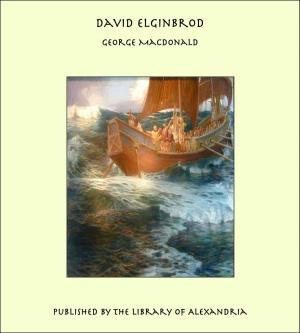The Principles of Chemistry (Complete)
Nonfiction, Religion & Spirituality, New Age, History, Fiction & Literature| Author: | Dmitry Ivanovich Mendeleyev | ISBN: | 9781465618337 |
| Publisher: | Library of Alexandria | Publication: | March 8, 2015 |
| Imprint: | Language: | English |
| Author: | Dmitry Ivanovich Mendeleyev |
| ISBN: | 9781465618337 |
| Publisher: | Library of Alexandria |
| Publication: | March 8, 2015 |
| Imprint: | |
| Language: | English |
Water is found almost everywhere in nature, and in all three physical states. As vapour, water occurs in the atmosphere, and in this form it is distributed over the entire surface of the earth. The vapour of water in condensing, by cooling, forms snow, rain, hail, dew, and fog. One cubic metre (or 1,000,000 cubic centimetres, or 1,000 litres, or 35·316 cubic feet) of air can contain at 0° only 4·8 grams of water, at 20° about 17·0 grams, at 40° about 50·7 grams; but ordinary air only contains about 60 per cent. of this maximum. Air containing less than 40 per cent. is felt to be dry, whilst air which contains more than 80 per cent. of the same maximum is considered as distinctly damp. Water in the liquid state, in falling as rain and snow, soaks into the soil and collects together into springs, lakes, rivers, seas, and oceans. It is absorbed from the soil by the roots of plants, which, when fresh, contain from 40 to 80 per cent. of water by weight. Animals contain about the same amount of water. In a solid state, water appears as snow, ice, or in an intermediate form between these two, which is seen on mountains covered with perpetual snow. The water of rivers, springs, oceans and seas, lakes, and wells contains various substances in solution mostly salt,—that is, substances resembling common table salt in their physical properties and chief chemical transformations. Further, the quantity and nature of these salts differ in different waters. Everybody knows that there are salt, fresh, iron, and other waters. The presence of about 3½ per cent. of salts renders sea-water bitter to the taste and increases its specific gravity. Fresh water also contains salts, but only in a comparatively small quantity. Their presence may be easily proved by simply evaporating water in a vessel. On evaporation the water passes away as vapour, whilst the salts are left behind. This is why a crust (incrustation), consisting of salts, previously in solution, is deposited on the insides of kettles or boilers, and other vessels in which water is boiled. Running water (rivers, &c.) is charged with salts, owing to its being formed from the collection of rain water percolating through the soil. While percolating, the water dissolves certain parts of the soil. Thus water which filters or passes through saline or calcareous soils becomes charged with salts or contains calcium carbonate (chalk). Rain water and snow are much purer than river or spring water. Nevertheless, in passing through the atmosphere, rain and snow succeed in catching the dust held in it, and dissolve air, which is found in every water. The dissolved gases of the atmosphere are partly disengaged, as bubbles from water on heating, and water after long boiling is quite freed from them.
Water is found almost everywhere in nature, and in all three physical states. As vapour, water occurs in the atmosphere, and in this form it is distributed over the entire surface of the earth. The vapour of water in condensing, by cooling, forms snow, rain, hail, dew, and fog. One cubic metre (or 1,000,000 cubic centimetres, or 1,000 litres, or 35·316 cubic feet) of air can contain at 0° only 4·8 grams of water, at 20° about 17·0 grams, at 40° about 50·7 grams; but ordinary air only contains about 60 per cent. of this maximum. Air containing less than 40 per cent. is felt to be dry, whilst air which contains more than 80 per cent. of the same maximum is considered as distinctly damp. Water in the liquid state, in falling as rain and snow, soaks into the soil and collects together into springs, lakes, rivers, seas, and oceans. It is absorbed from the soil by the roots of plants, which, when fresh, contain from 40 to 80 per cent. of water by weight. Animals contain about the same amount of water. In a solid state, water appears as snow, ice, or in an intermediate form between these two, which is seen on mountains covered with perpetual snow. The water of rivers, springs, oceans and seas, lakes, and wells contains various substances in solution mostly salt,—that is, substances resembling common table salt in their physical properties and chief chemical transformations. Further, the quantity and nature of these salts differ in different waters. Everybody knows that there are salt, fresh, iron, and other waters. The presence of about 3½ per cent. of salts renders sea-water bitter to the taste and increases its specific gravity. Fresh water also contains salts, but only in a comparatively small quantity. Their presence may be easily proved by simply evaporating water in a vessel. On evaporation the water passes away as vapour, whilst the salts are left behind. This is why a crust (incrustation), consisting of salts, previously in solution, is deposited on the insides of kettles or boilers, and other vessels in which water is boiled. Running water (rivers, &c.) is charged with salts, owing to its being formed from the collection of rain water percolating through the soil. While percolating, the water dissolves certain parts of the soil. Thus water which filters or passes through saline or calcareous soils becomes charged with salts or contains calcium carbonate (chalk). Rain water and snow are much purer than river or spring water. Nevertheless, in passing through the atmosphere, rain and snow succeed in catching the dust held in it, and dissolve air, which is found in every water. The dissolved gases of the atmosphere are partly disengaged, as bubbles from water on heating, and water after long boiling is quite freed from them.















